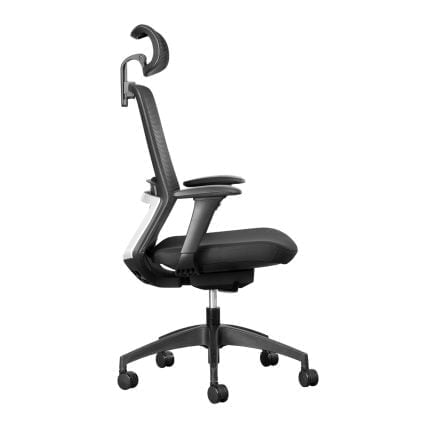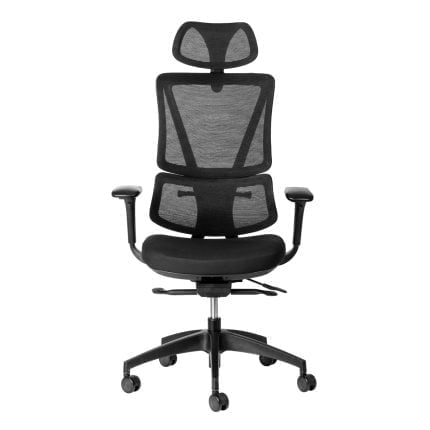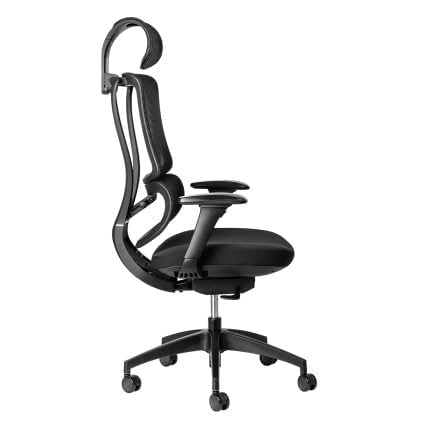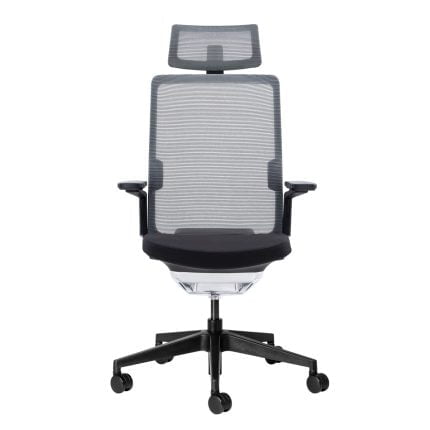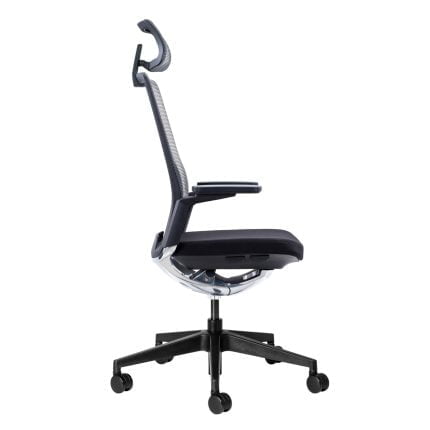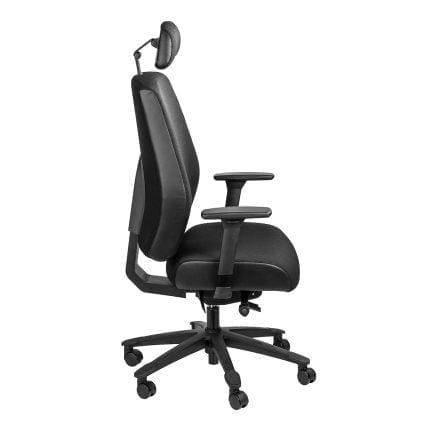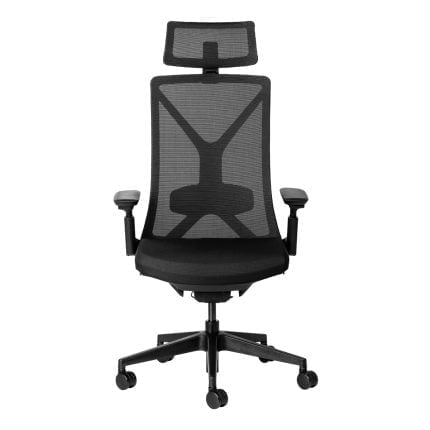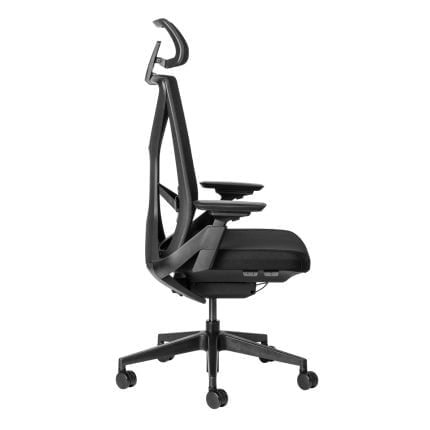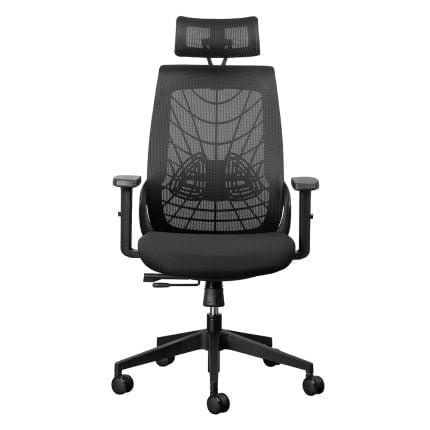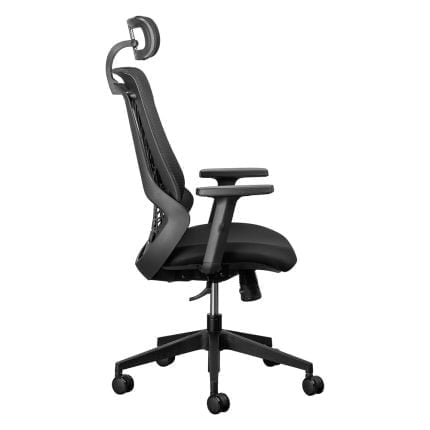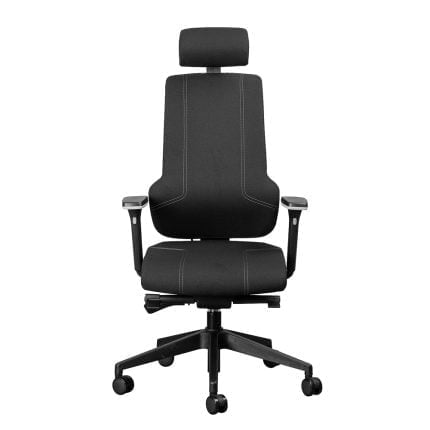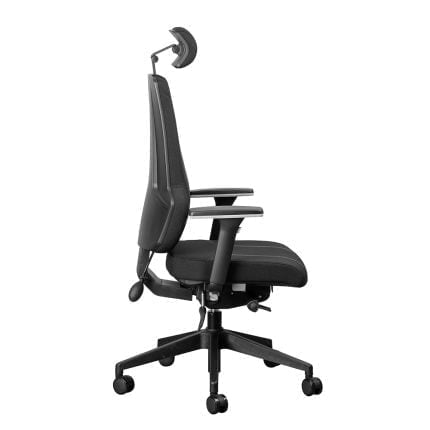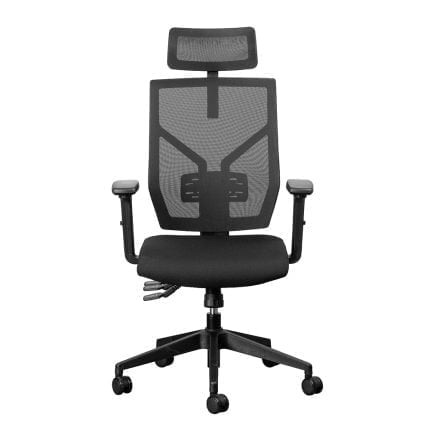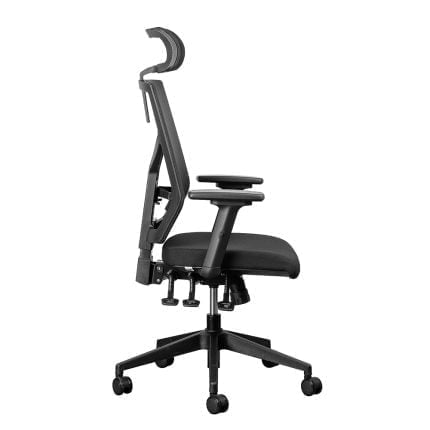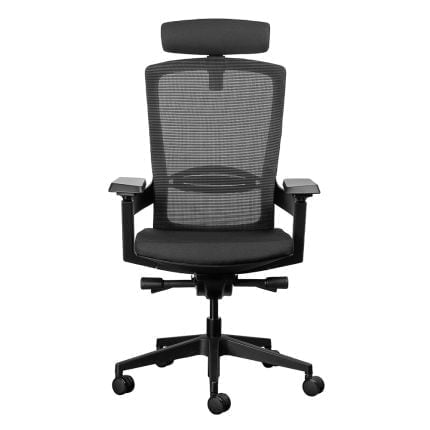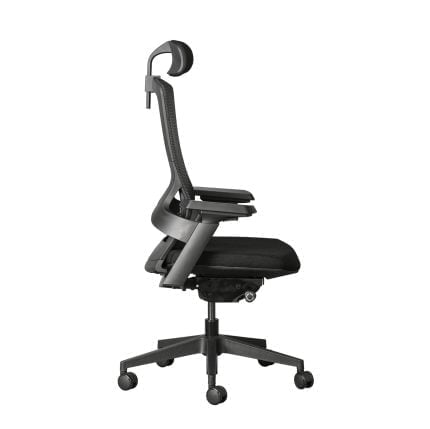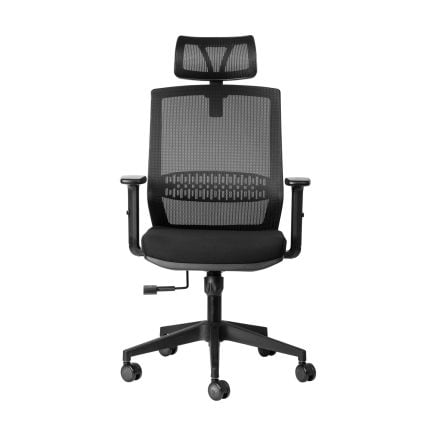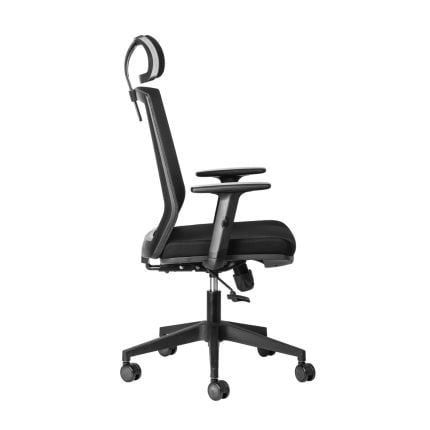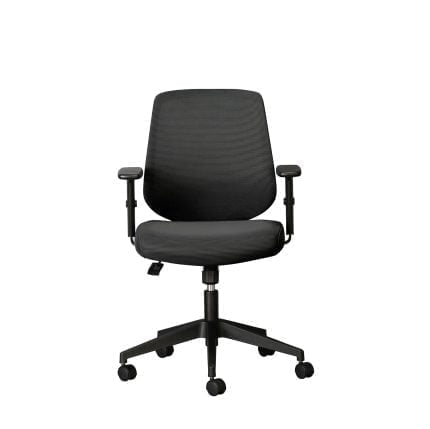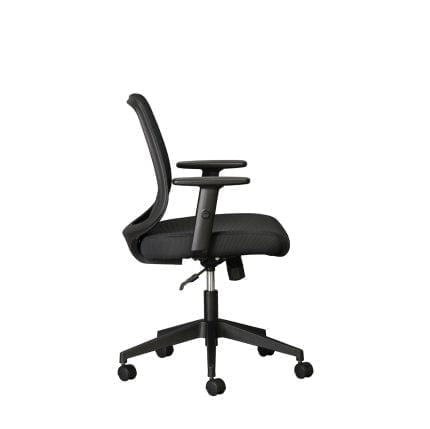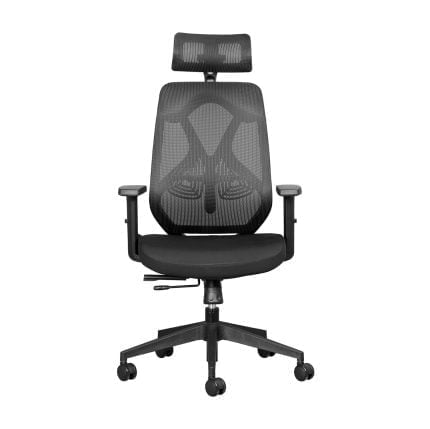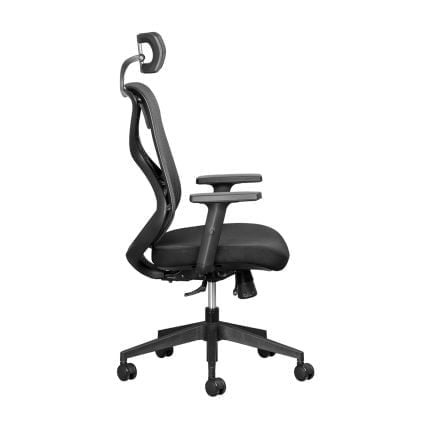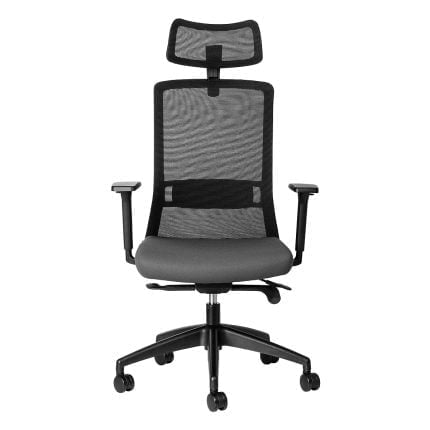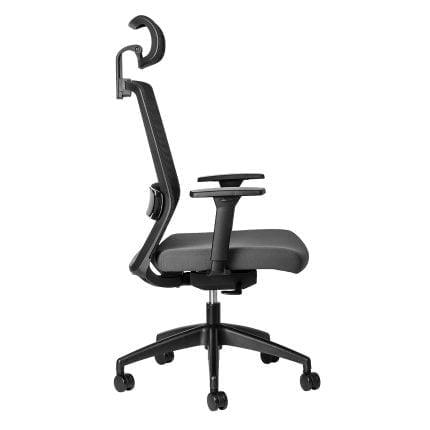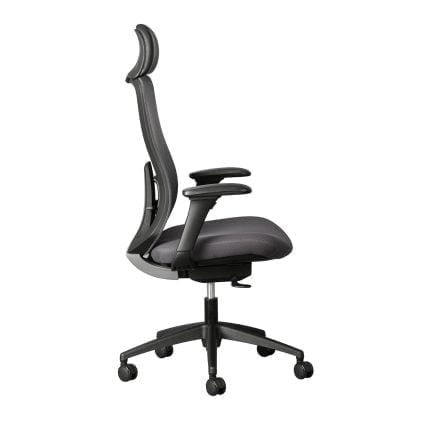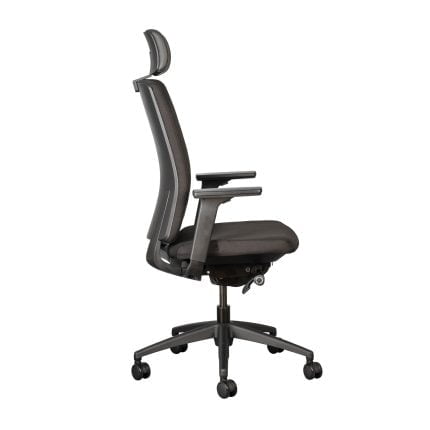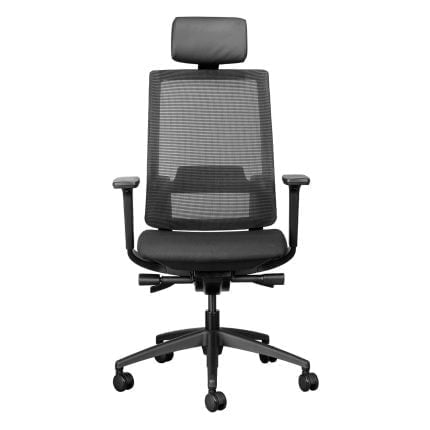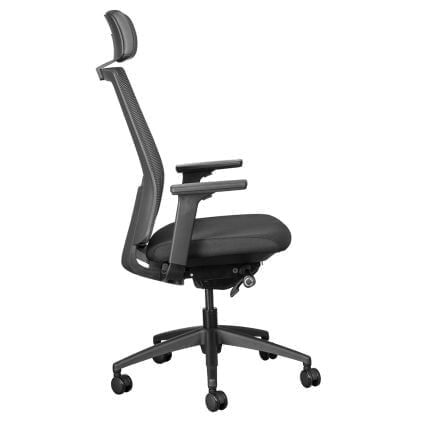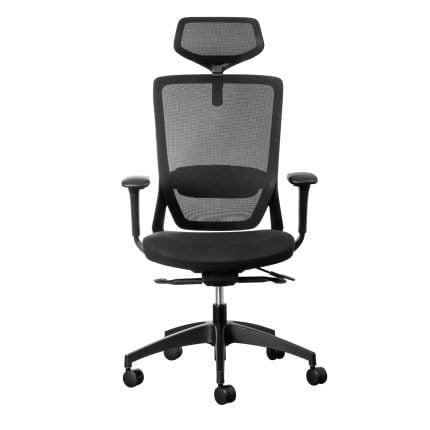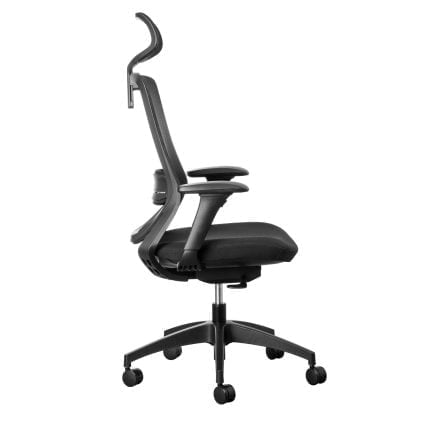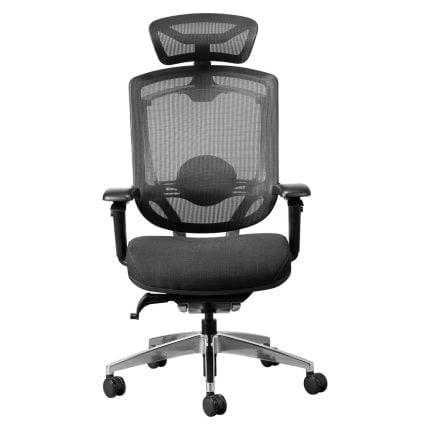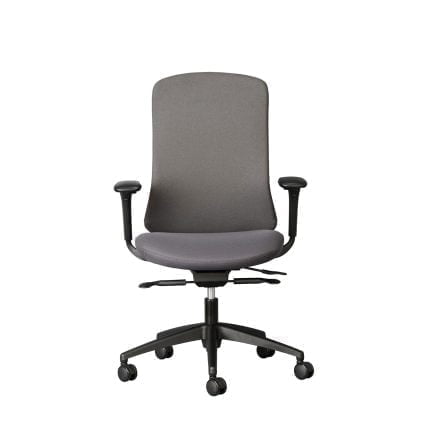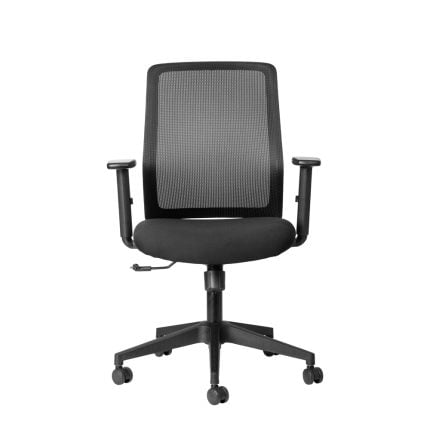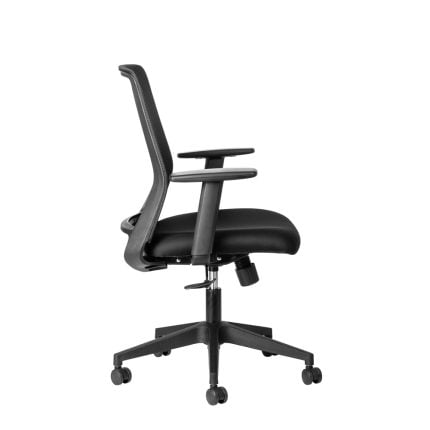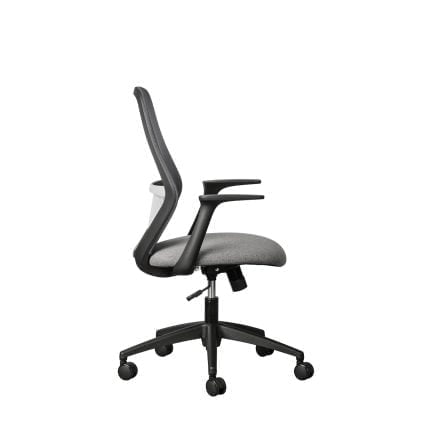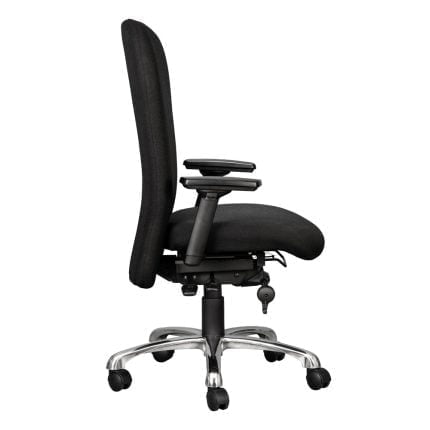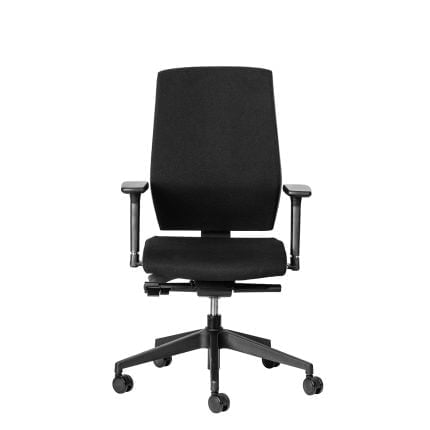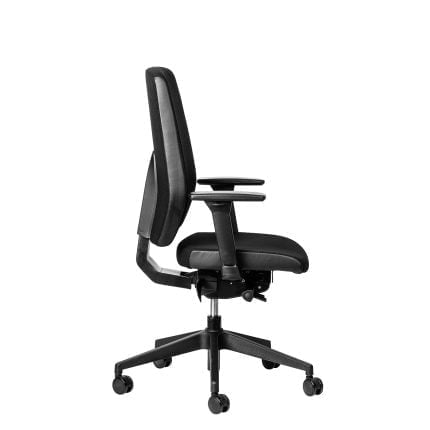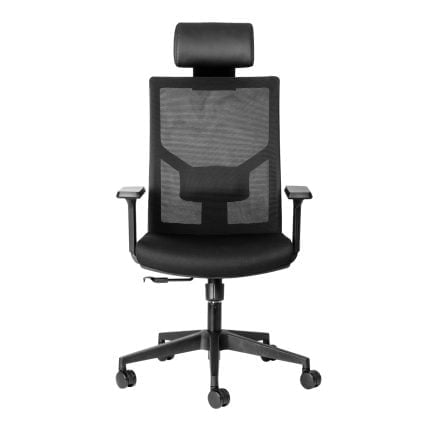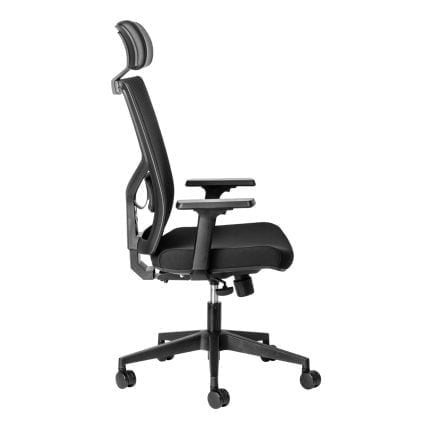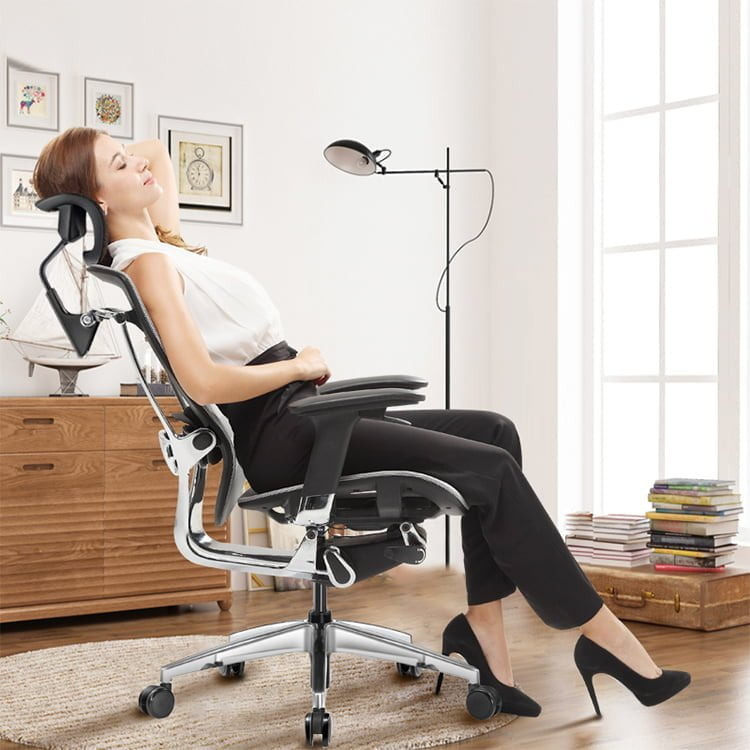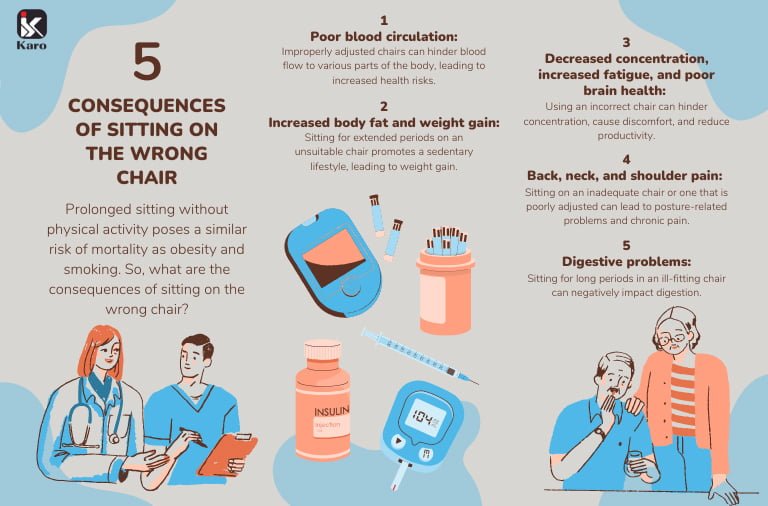Ergonomic Office Chairs
Ergonomic office chairs for every environment
Whether you are looking for executive or task chairs, or seating for visitors, training rooms or breakout areas, we have the right ergonomic chair for your work or home office. Because we offer you customised ergonomic seating solutions, we are able to match your aesthetic and budgetary requirements.
Categories
Activ Ergonomic Office Chair
R7655 – R7895 incl VATCapri Ergonomic Office Chair
R6095 – R6295 incl VATErgoBack Ergonomic Office Chair
R7150 – R7355 incl VATEvolv Ergonomic Office Chair
R8095 – R8295 incl VATOrthoGrande XXL Orthopedic Chair
R10495 – R10695 incl VATYen Ergonomic Office Chair
R7090 – R7295 incl VATLynx Ergonomic Office Chair
R4705 – R4899 incl VATOrthoMax Orthopedic Chair
R8690 – R8795 incl VATOrthoAir Orthopedic Chair
R5275 – R5495 incl VATFirefly Ergonomic Office Chair
R7819 – R7999 incl VATElara Ergonomic Office Chair
R3447 – R3695 incl VATNova Ergonomic Office Chair
R3150 – R3295 incl VATSkye Office Chair
R3250 – R3460 incl VATLeila Ergonomic Office Chair
R4830 – R4999 incl VATLuna Ergonomic Office Chair
R4405 – R4599 incl VATErgoCurve Ergonomic Office Chair
R5300 – R5495 incl VATVera Mesh Ergonomic Office Chair
R6395 – R6595 incl VATMira Ergonomic Office Chair
R6765 – R6995 incl VATMira-Mesh Ergonomic Office Chair
R6779 – R6999 incl VATFenix Ergonomic Office Chair
Alya Ergonomic Office Chair
R13718 – R13926 incl VATHeathrow 24/7 Heavy Duty Chair
R8950 – R9160 incl VAT1. What is an Ergonomic Office Chair?
An ergonomic office chair is designed to provide you with optimum support and comfort, while simultaneously ensuring a healthy, comfortable and productive seated posture.
By taking into account your body shape and size, a good ergonomic chair can be adjusted so that it correctly supports your body, irrespective of whether you are working, gaming or simply relaxing in the chair.
- Best Office Chairs for Tall People
- Choosing the Right Office Chair for Short People
- Use our Chair Selector to help you select the right chair for YOU!
Ergonomic chairs allow for the natural flexibility and movement of your body as you change your seated position. Because they are highly adjustable and promote dynamic sitting, these chairs ensure that you maintain a correct posture and that your body weight is evenly distributed. This reduces muscle strain, back pain, neck and shoulder fatigue, and other physical discomforts caused by a poor seated posture. The 5 consequences of sitting on the wrong chair.
2. Why do you need an ergonomic office chair?
An ergonomic office chair is essential to maintain good posture and reduce the risk of discomfort or injury, especially for anyone that spends the majority of their working day sitting at their desk or workstation. According to one international study, office workers spend 75% of their waking hours sitting down!
Unfortunately, our bodies are not designed for sitting, and doing so for long periods can have a negative impact on our long-term health and wellbeing. How to Protect Your Health in the Age of the Office Chair.
According to Better Health (Vic), the most common health-related issues caused by sitting for extended periods include:
- Back, neck and shoulder pain
- Obesity
- High blood pressure
- Constipation
- Weakening of the large leg and gluteal muscles
- Chronic fatigue
- Deep Vein Thrombosis (DVT)

3. How an Ergonomic Office Chair can help improve your wellbeing
An ergonomic chair should fit the person who uses it. If everyone had the same size and shape body, this would be easy! But of course, everyone is different and so the design of an ergonomic chair must accommodate the range of individuals who will use it.
a. Posture support
A good ergonomic chair should have a contoured backrest that helps maintain the proper alignment of the spine, reducing the strain on the lower back. The backrest should include an adjustable lumbar support to keep the spine in its natural elongated ‘S’ position. Why back support for an office chair is important.
b. Comfort and adjustability
Ergonomic office chairs are designed for comfort during extended periods of sitting. An adjustable seat and backrest are important to ensure the chair fits your body shape, height and weight, and adjustable armrests can help to rest your arms while typing or scrolling.
Moulded foam seat cushioning provides additional comfort, and a mesh backrest promotes air flow and helps to reduce body temperature when sitting for long periods, especially in a hot climate. Mesh office chairs – pros & cons.

c. Reduced strain on joints
Sitting for long periods in an improper chair can lead to discomfort and strain on the joints, especially in the neck, shoulders, and lower back. Ergonomic chairs are designed to distribute body weight evenly and reduce pressure on these areas. Back pain in the workplace
d. Increased productivity
If you are comfortable and properly supported, you are more likely to be focused and productive. Discomfort and pain from poor-quality chairs can lead to distractions and decreased efficiency, whether at work or play.
e. Prevention of musculoskeletal disorders
Prolonged use of a chair that is not ergonomic can contribute to the development of musculoskeletal disorders, such as back pain, neck pain, and carpal tunnel syndrome. Ergonomic chairs are designed to minimise these risks.
f. Improved circulation
Ergonomic office chairs promote better blood circulation by reducing pressure on certain points of the body. This can help prevent numbness and tingling in the legs and feet.
g. Ergonomic chairs may improve long-term health and wellbeing
Using an ergonomic chair can contribute to long-term health by reducing the risk of chronic conditions associated with poor sitting habits, such as obesity, cardiovascular disease, and diabetes.
4. How do you know if an office chair is ‘ergonomic’?
When shopping for a new office chair, you may come across the term ‘ergonomic’ and wonder what this means. An ergonomic chair is designed specifically to support good posture, keep you comfortable and reduce any unnecessary strain on your body. To ensure the chair is truly ergonomic, it must be highly adjustable and should include the following features:
A height adjustable seat with a front edge that curves towards the floor.
Breathable, non-slippery fabric on the seat.
A supportive backrest that follows the shape and curvature of your back.
A backrest that supports the lumbar region of your back. A height adjustable backrest and/or adjustable lumbar support is critical. Why back support for an office chair is important.
A seat that does not put pressure on the back of thighs. Ideally, the seat depth should be adjustable to accommodate taller individuals or anyone with a coccyx-related issue. A chair with a seat slider allows you to adjust the seat depth to alleviate pressure on the coccyx, thereby improving your seated comfort and wellbeing. These ergonomic office chairs have a seat slider.
A synchronous mechanism or free-float swivel and tilt mechanism that allows Dynamic Sitting
Adjustable armrests that do not interfere with free movements within your work area. What is the difference between office chair armrests and which is best?
Controls that are easy to adjust from a sitting position. This is especially important if different people use the same chair.
If an office chair ticks all of these boxes, then it should be comfortable and supportive enough to be considered an “ergonomic chair”.
5. What to look for when buying an ergonomic chair?
a. Adjustability
Adjustability, adjustability and….. adjustability.
The more adjustable functions that the chair has, the higher the probability that it can be correctly adjusted to suit your body shape and size.
b. Appropriate weight rating
Ensure that the weight rating is suitable. Typically, office chairs are rated for 120 and 150kg, while some are rated for up to 180kg. Choosing a chair with the incorrect weight rating might result in an unpredicted breakage, possibly causing injury and making the warranty invalid. The Ultimate Guide to Office Chair Weight Limits. If you weigh more than 120kg, you should consider a chair with a higher weight rating. These ergonomic office chairs have a weight rating greater than 120kg.
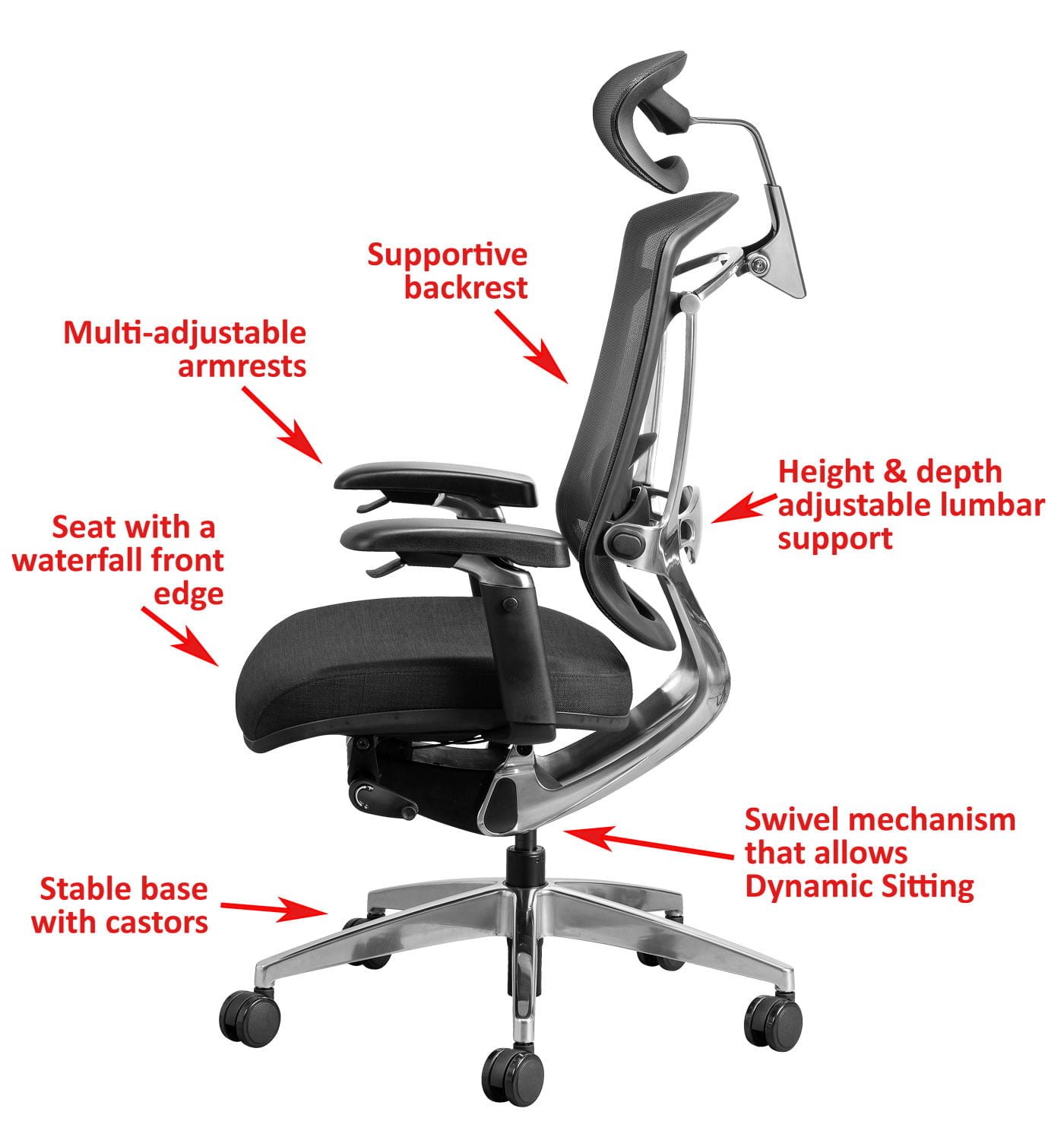
c. Wide range of features
Look for a chair that is designed with a wide range of features such as head and neck support, comfort pads, and adjustable backrest angle. It’s essential to provide appropriate support to your spine while sitting to avoid unnecessary strain and injuries. The ideal ergonomic chair should also have a swivel base for a wider range of motion, allowing for more natural movement.
d. Warranty
Ergonomic office chairs are available in South Africa with warranty periods that range from 6 months to 10 years and more. In most cases, these warranties are for chairs that are only used for 8 hours per day, 5 days per week. Heavy-duty chairs may have extended warranties that cover the chair for 24/7 usage.
Make sure that you select a chair with a warranty that is suitable for the application for which it will be used.
e. Comfort
Finally, pick a chair that looks and feels comfortable. Look for materials that are robust and durable, yet comfortable to touch. A chair with the right height, weight and overall size can also help ensure maximum comfort for users of all body shapes and sizes.
Like a new pair of shoes, give the chair a test run to make sure it really FEELS comfortable!
6. Is an ergonomic office chair worth the investment?
An ergonomic office chair can be a wise investment if you’re looking to ensure good posture while you work. Choosing one means you’ll benefit from improved comfort and productivity levels in the long run. How Much Should You Budget for an Ergonomic Office Chair?
A good quality ergonomic office chair can reduce the risk of back pain and injury that might otherwise be caused by long periods spent sitting in an uncomfortable chair – The Leagrave Therapy Clinic.
While the initial cost of an ergonomic chair may seem expensive, the money you save in the long run, by avoiding pain and suffering, will be more than worth it. Unveiling the True Cost of Ergonomic Office Chairs: Are they Worth the Investment?





